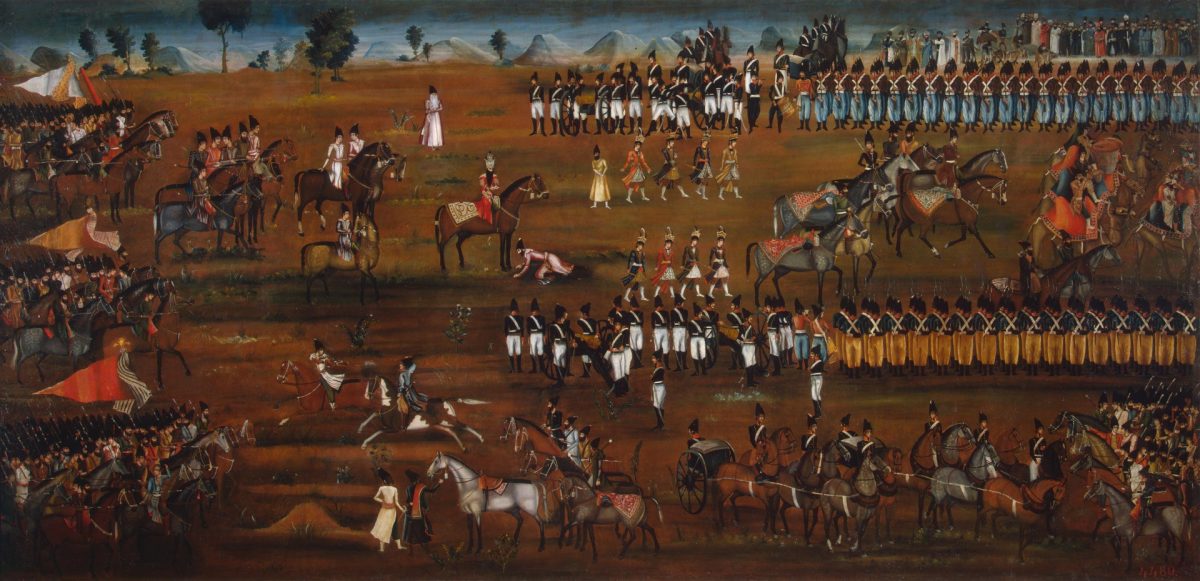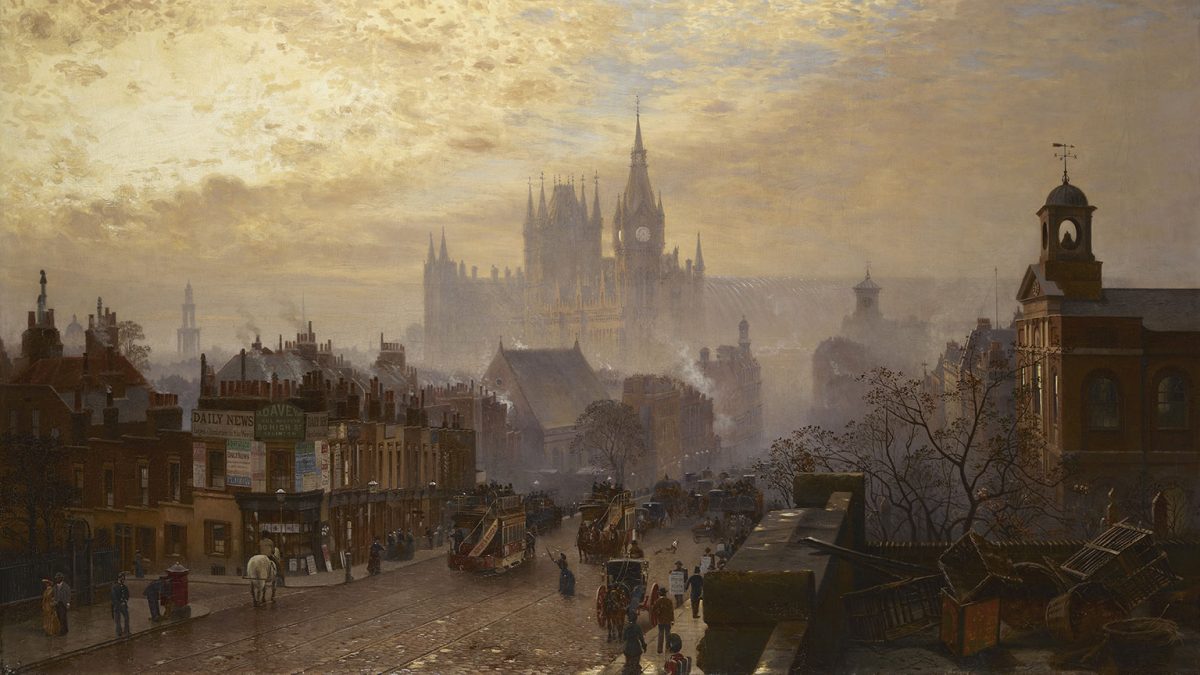The 11 July snap election in Bulgaria may ultimately be remembered for its turnout rate, which fell to an all-time low of 42%. Much of the post-election debate revolved around the reasons for this figure. Some blamed the new electronic-voting machines, which supposedly scared off the elderly and less educated; others claimed that people were unwilling to vote during the summer vacation, especially since the outcome was entirely predictable. Only a few observers on the left suggested that the country’s consistently dwindling voter participation might have something to do with the lack of alternatives on the ballot.
The previous Bulgarian elections, held in April 2021, produced a short-lived hung parliament. President Rumen Radev, affiliated with the ‘conservative-left’ Bulgarian Socialist Party (BSP), facilitated a political reconciliation of sorts by appointing a caretaker government with members drawn from various political backgrounds. With that, the almost uninterrupted 12-year rule of the right-wing party GERB – under the leadership of strongman Prime Minister Boyko Borissov – came to an abrupt end.
Borissov founded GERB (literally ‘coat of arms’) in 2006 after a four-year stint as Chief Secretary of the Ministry of the Interior in the cabinet of Simeon Saxe-Coburg-Gotha, the former Bulgarian tsar who was elected PM in 2001. Borissov’s popular appeal was based on his brash persona and tough stance on organised crime, along with his self-presentation as a political outsider. In 2005, he captured the mayoralty of Sofia with almost 70% of the vote. Four years later, he led GERB into government after almost winning an absolute majority in parliament. His party, modelled on Germany’s Christian Democrats, promised to eradicate criminal cartels, ensure the efficient disbursal of EU funds, limit government spending and taxation, and loosen employment laws: a programme that won support from the European political establishment.
Once in office, GERB relied on a revolving door of coalition partners to stabilize its rule: most recently, an alliance of far-right parties known as the United Patriots. Its tenure was characterized by growing social inequality, brutal austerity, and a steady decline in the quality of public services, healthcare in particular. With the government unable to sustain its momentum amid a series of corruption scandals and protests – which escalated throughout 2020 and 2021 – GERB’s former coalition partners eventually decided to draw a cordon sanitaire around the ruling party, joining the rest of Bulgaria’s political class in refusing to cooperate with Borissov. The Biden administration dealt the PM a further blow in June by sanctioning several Bulgarian politicians and businessmen under the Magnitsky Act. The list included the media mogul Delyan Peevski, an MP for the centrist Movement for Rights and Freedoms (DPS) and allegedly a close associate of Borissov. The leader’s fall from grace was finalized by the election results this month. GERB dropped to 23%, down 1 million votes from its 2009 result. Parliament is now deadlocked, and negotiations between the parties are underway.
However, the real losers of the night were the BSP. Despite the popularity of President Radev and his brief caretaker administration, the party crashed to one of its worst ever results, taking in only 13%. Descended from the Bulgarian Communist Party, which ruled the country from 1944 to 1989, the BSP was one of the most popular national political organizations after the fall of the Eastern Bloc – a stark contrast with its sister parties in other former communist countries. It rebranded itself as ‘socialist’ in 1989, won the first democratic elections the following year, and adopted a new constitution. Along with its main rivals – the anti-communist Union of Democratic Forces (SDS), now allied with GERB – it supported a prompt transition towards liberal capitalism. But the general population had different priorities, expecting the elimination of old-regime privileges without sacrificing the robust welfare state built up over previous decades. This split between the parties and the electorate led to a series of unstable governments, which struggled to hold onto power throughout the 90s.
The skyrocketing unemployment and poverty of the transition period caused the BSP to pitch left in the 1994 elections, promising to temper neoliberal reforms with social protections. Elected on this platform, the BSP tried to retain price controls and protect the welfare state while privatizing the financial sector and deregulating international trade. Yet this attempt at class compromise resulted in a severe banking and social crisis three years later. Popular discontent with hyperinflation brought down the government in 1997, and the anti-communist parties managed to win a stable majority for the first (and only) time, offering radical neoliberal reform and the privatization of virtually all industry. The lesson for the BSP leadership was simple: that its left flank must not be allowed to govern. The BSP’s liberal faction soon took the helm, serving two more stints in government: from 2005 to 2009, and 2013 to 2014.
Today, the nominally social-democratic BSP is facing a crisis similar to that of centre-left parties in the rest of Europe. Voters resent it for the right-wing measures enacted in the late 2000s, including the introduction of a 10% flat tax. They were also repelled by its decision to appoint the media tycoon Delyan Peevski as head of the National Security Agency in 2013. Since its return to opposition, the BSP has failed to highlight the contiguity between neoliberal reforms and rampant corruption. Instead, it has opted for handwringing over the loss of the ‘traditional Bulgarian family’, quixotic denunciations of ‘genderism’, and support for GERB’s nationalist campaign against Northern Macedonia. As a result, the BSP’s voter base has abandoned it in droves. Its working-class support fell to just 44% in the last election, compared to over 65% for all other parliamentary parties.
Amid the terminal decline of Bulgarian socialism, the country’s politics are now defined by the fault line between ‘protest parties’ and ‘the establishment’, pitting new and not-so-new smaller parties against the bloc composed of GERB, the BSP and the DPS (which claims to represent Bulgaria’s Muslim minority). Given Bulgaria’s status as the poorest, most unequal country in the EU – with swathes of its population lost to outward migration – one might assume that the field would be wide open for a left-leaning social-democratic opposition. But this prospect has largely been eclipsed by the dominance of ‘anti-corruption’ discourse, which overrides all other concerns. This idée fixe, which grew partly out of popular anger at socialist Bulgaria’s so-called ‘red bourgeoisie’, was compounded by the country’s accession to the EU in 2007, since fighting corruption formed a central pillar of the Cooperation and Verification Mechanism, introduced to monitor the integration of Eastern European nations to the bloc.
During the most recent election campaign, the self-styled ‘parties of change’ promised to break with the GERB model. One of their slogans talked about ‘scraping off’ the leftovers of the Borissov legacy. Yet when the votes were cast, none of them received a definite mandate. Izpravi se, Mutri Vun (‘Stand Up, Thugs Out!’), a centre-left grouping led by the charismatic former ombudswoman Maia Manolova, got just 5% of the vote, roughly the same as its share in April. Democratic Bulgaria (DB), the liberal–green coalition, won 13%: a slight increase from the last election. The outlook was somewhat better for the populist Ima Takuv Narod (‘There Is Such a People’, ITN), led by the popular folk-rock singer and TV talk-show host Slavi Trifonov, which rose to 24%. All three organisations came to prominence last spring through an effective PR campaign that sought to expose GERB as morally and institutionally corrupt. They organised live-streamed hearings in parliamentary committees to investigate accusations of graft by Borissov’s top officials. These weeks-long sessions, presided over by Manolova, made for highly entertaining primetime television, featuring testimonies of shady businessmen who claimed to have been extorted by government ministers. Their findings validated the sentiments of the anti-Borissov protesters who had swarmed the streets of Sofia since July 2020, denouncing corruption and political repression.
Izpravi se is the only ‘party of change’ whose platform raises social justice issues and attempts to confront the impact of the Covid-19 pandemic. Its membership includes former BSP activists and participants in the recent protests. Yet even Manolova tries to avoid the appearance of progressive politics, describing herself as ‘neither left nor right’. The DB’s Hristo Ivanov has also cultivated an apolitical vocabulary around state capture and judicial reform – issues thought to transcend traditional political divisions. He has recently reoriented DB along populist-nationalist lines in an attempt to move on from his embarrassing tenure as a reformist Minister of Justice under GERB and shake the coalition’s reputation as an exclusively middle-class outfit.
While Ivanov’s strategy has had some success, Bulgaria’s most important political actor following the July ballot – catapulted into the strongest position to form a government – is ITN. Though the party ran in parliamentary elections for the first time in 2021, Slavi Trifonov has arguably been building up its base since the 1990s. His music group, The Ku-Ku Band, has been one of the most popular acts for the past thirty years. Their patriotic songs were the soundtrack to the anti-communist movements of early 90s, and their current popularity can partly be attributed to nostalgia for the optimism of that period. The Bulgarian diaspora, many of whom tune into Trifonov’s talk show and turn out to see The Ku-Ku Band on tour, voted for ITN in large numbers. The party won 45% of the vote in Germany, and over 50% in the UK and Spain.
ITN representatives embrace the ‘populist’ label, comparing themselves to Italy’s Five Star Movement, Ukraine’s Volodymyr Zelensky and even Trump. The leaders refuse to be referred to as ‘politicians’ and style themselves as ordinary workers employed by the people. Their party is not a ‘party’ but a ‘political project’. Like the Italian M5S, they promise to introduce direct democracy mechanisms including frequent referendums. They are heavily reliant on social media and private broadcasting channels, which allow them to skirt public scrutiny.
One of ITN’s few definitive political commitments is to reduce taxpayer subsidies for political parties: a reform which Trifonov tried to pass via a public referendum several years ago. Whether this would aid Bulgarian democracy is questionable, as subsidies are currently the only mechanism to transparently fund political activities given the parties’ low membership numbers. In general, ITN has maintained a remarkable silence on most major issues beyond electoral reform (again rejecting the left–right axis as outdated). It would not even offer an unqualified endorsement of the Covid-19 vaccine programme, asserting that the public should hear ‘all points of view’ on the question of vaccine safety. Despite its anti-elite posturing, the party is now proposing a government made up entirely of corporate-technocratic ‘experts’. The first nominee for Minister of Culture was Stanislava Artmutlieva, the owner of Bulgaria’s largest music distributor, famed for her passionate defence of copyright law. The Ministry of Energy is to be handed over to Krasimir Nenov, the director of a private coal thermal power plant. A Minister for the Environment has not yet been nominated.
Trifonov’s first choice for Prime Minister was Nikolay Vasilev, an investment banker who served in the former tsar’s cabinet and identifies as the country’s ‘top fiscal hawk’. Vasilev pushed through the radical deregulation policies of the 2000s, privatizing the state-owned telecommunications company and making almost 20,000 public employees redundant. Under his influence, ITN has forecast further public sector redundancies in the coming years under an obscure ‘digitalisation’ agenda. The party has also announced its intention to privatize major highways, along with the last publicly owned Bulgarian Development Bank (embroiled in controversy after huge loans were given to a group of politically connected businesses during GERB’s term). Although Trifonov has since withdrawn Vasilev’s nomination after a public backlash, the pair’s proximity underscores what many voters knew already: that the leftovers have merely been reheated, rather than scraped off the plate.
The three protest parties agree on the need to pass judicial reforms and oust the current prosecutor general, who has served as GERB’s legal enforcer. They all subscribe to the magical powers of ‘e-governance’ in rooting out corruption and improving public services. In their campaign against graft, each is remarkably insensitive to social disparities: ITN has compared the corruption of the bus driver who steals petrol from his work vehicle with that of the politician embezzling funds from the public purse. Added to this, each party combines its emphasis on ‘the masses’ with a blind deference to experts. The deputy leader of ITN has remarked that he admires Margaret Thatcher for her resolve in doing what was ‘right for the people’, even if the people themselves did not realise it.
Such commonalities make it possible that Izpravi se and Democratic Bulgaria will choose to prop up an ITN minority administration. But this is far from certain. So far, only DB has expressed its willingness to enter negotiations with Trifonov, whereas the BSP and Izpravi se have been entertaining the possibility of giving the caretaker government a regular mandate. Borissov has ruled out supporting ITN, yet he may stand to benefit from an unpopular and ephemeral cabinet led by aloof technocrats. Many are speculating that GERB politicians will simply not show up in parliament and allow the other parties to vote in ITN. Then, when the new government falters, they will exploit the desire for ‘stability’ and storm to victory in the next election.
Absent an explosion of social protest from below or a dramatic shift in the fortunes of the trade unions, Bulgaria’s chances of reversing this regressive trend are bleak. Given the continued dominance of the anti-corruption framework, the best shot for the country’s left is to shift the emphasis onto the structural reasons for widespread corruption – presenting itself as the solution to the causes rather than the symptoms. Otherwise, it risks disappearing off the radar of the popular classes, whose only options will be an ‘old politics’ or a ‘new populism’ with little to differentiate them.
Read on: Marco D’Eramo, ‘Populism and the New Oligarchy’, NLR 82.









